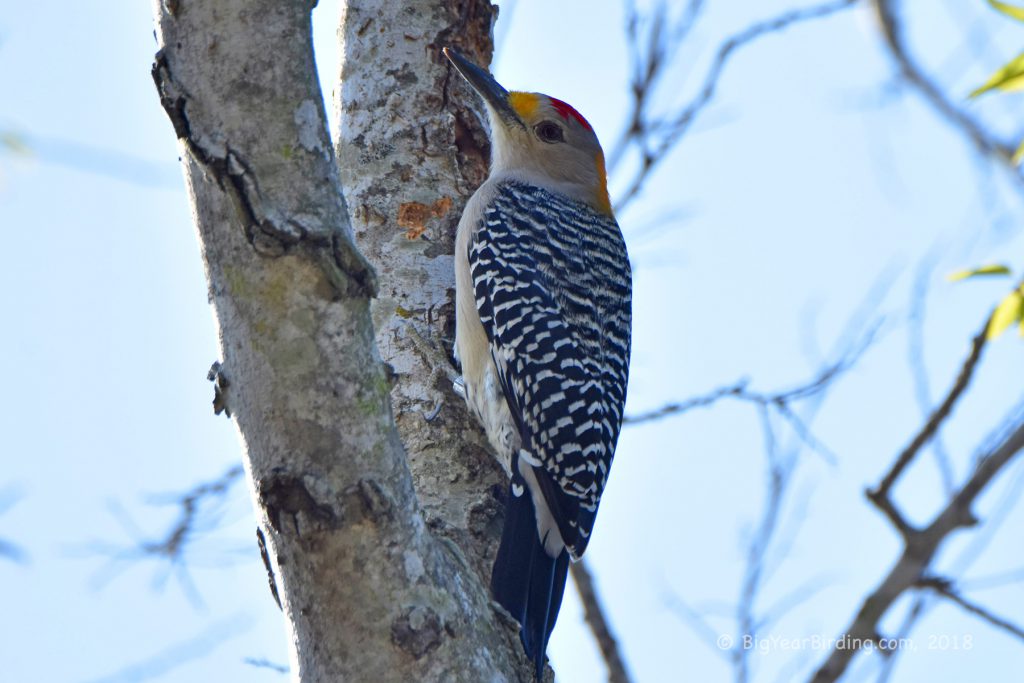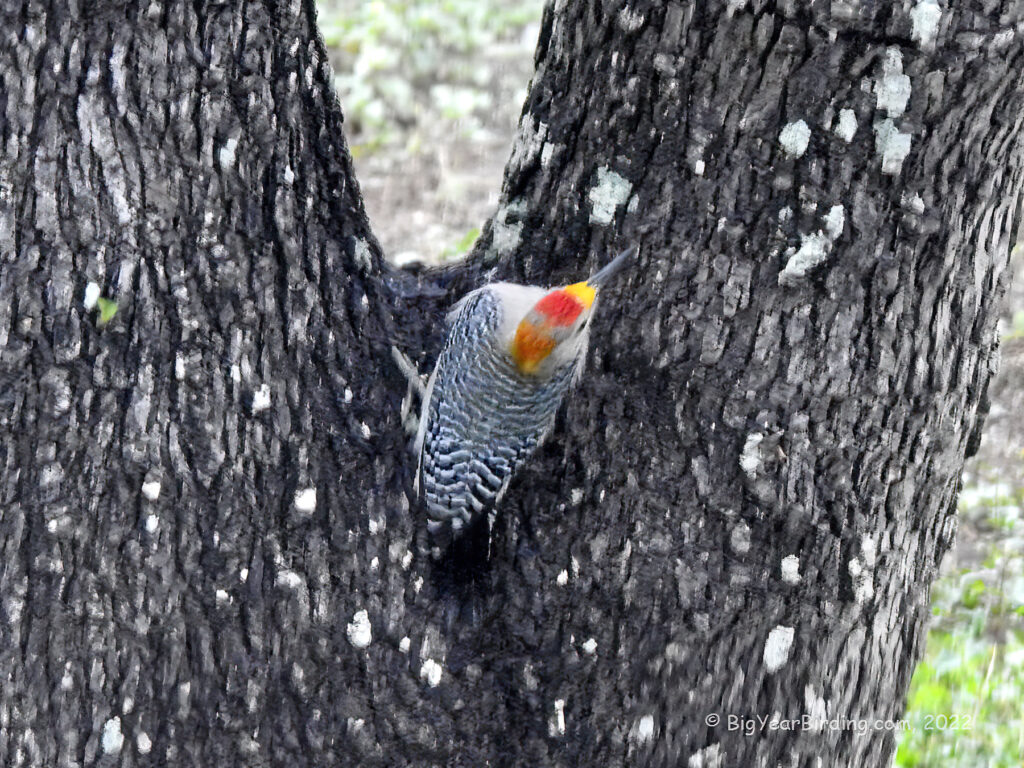
The Golden-fronted Woodpecker (Melanerpes aurifrons) is a species of woodpecker that is native to the United States and Mexico. It is approximately 8.5 to 9 inches in length, with a wingspan of around 13 to 14 inches. They typically weigh between 1.5 to 2 ounces.
 One of the most distinctive field marks of the Golden-fronted Woodpecker is the red crown on the male, while the female has a black crown with a red patch at the back. The back and wings of both males and females are greenish-yellow. They have white underparts with black spots on the sides and a black tail with white spots. The beak is chisel-shaped and black, and the legs and feet are also black.
One of the most distinctive field marks of the Golden-fronted Woodpecker is the red crown on the male, while the female has a black crown with a red patch at the back. The back and wings of both males and females are greenish-yellow. They have white underparts with black spots on the sides and a black tail with white spots. The beak is chisel-shaped and black, and the legs and feet are also black.
The Golden-fronted Woodpecker is a non-migratory species, but they do show some seasonal movements in response to food availability. In the southern parts of their range, they may move to higher elevations during the winter months to find food. They feed on insects, fruit, and nuts, and are known to frequently visit bird feeders.
The species is common in open woodlands, riparian areas, and suburban areas, where they often nest in cavities of dead trees or utility poles. They are also known to use artificial nest boxes. Golden-fronted Woodpeckers are secondary cavity nesters, meaning they use cavities created by other birds or insects rather than excavating their own. They are known to defend their nests and territories fiercely.

Overall, the Golden-fronted Woodpecker is a common and widespread species that is easily recognizable due to its distinctive markings and loud, distinctive calls. They are an important part of the ecosystem, playing a role in controlling insect populations and helping to create nesting sites for other birds. With their distinctive appearance and behavior, they are a fascinating species to observe and study, and they provide a valuable contribution to the natural world.
